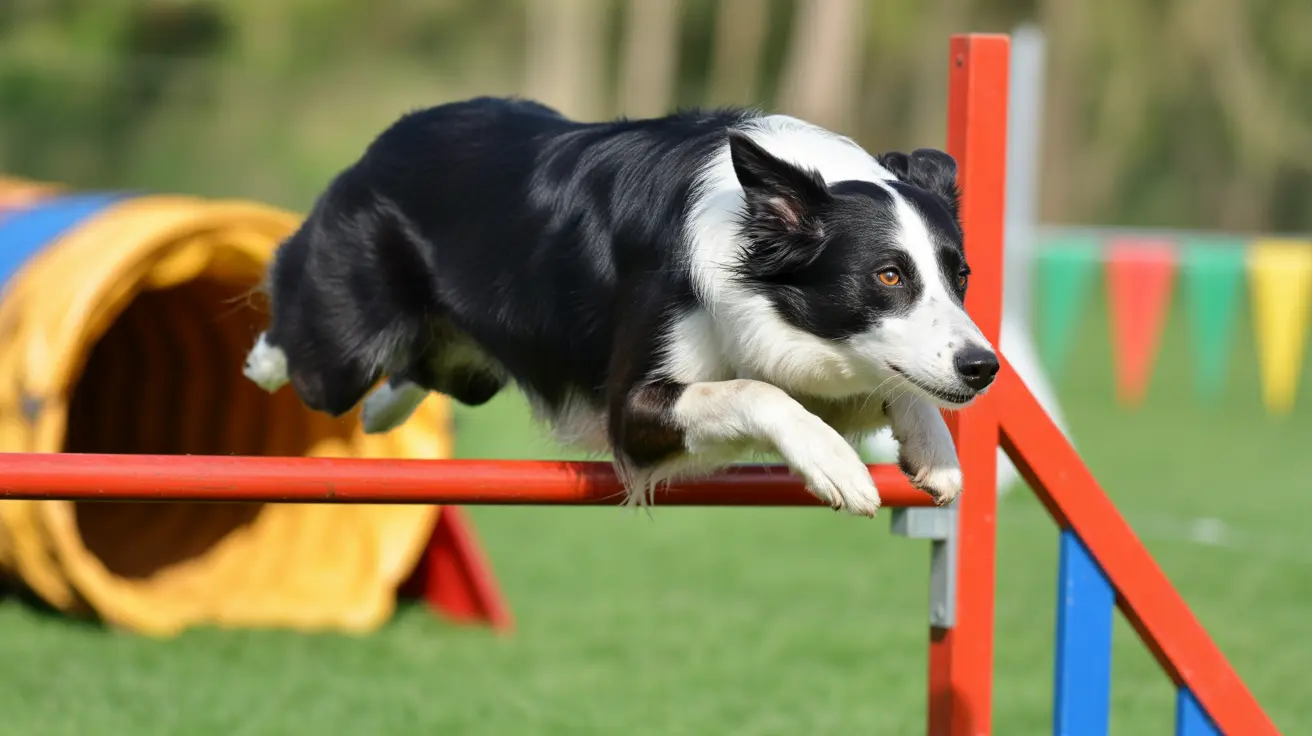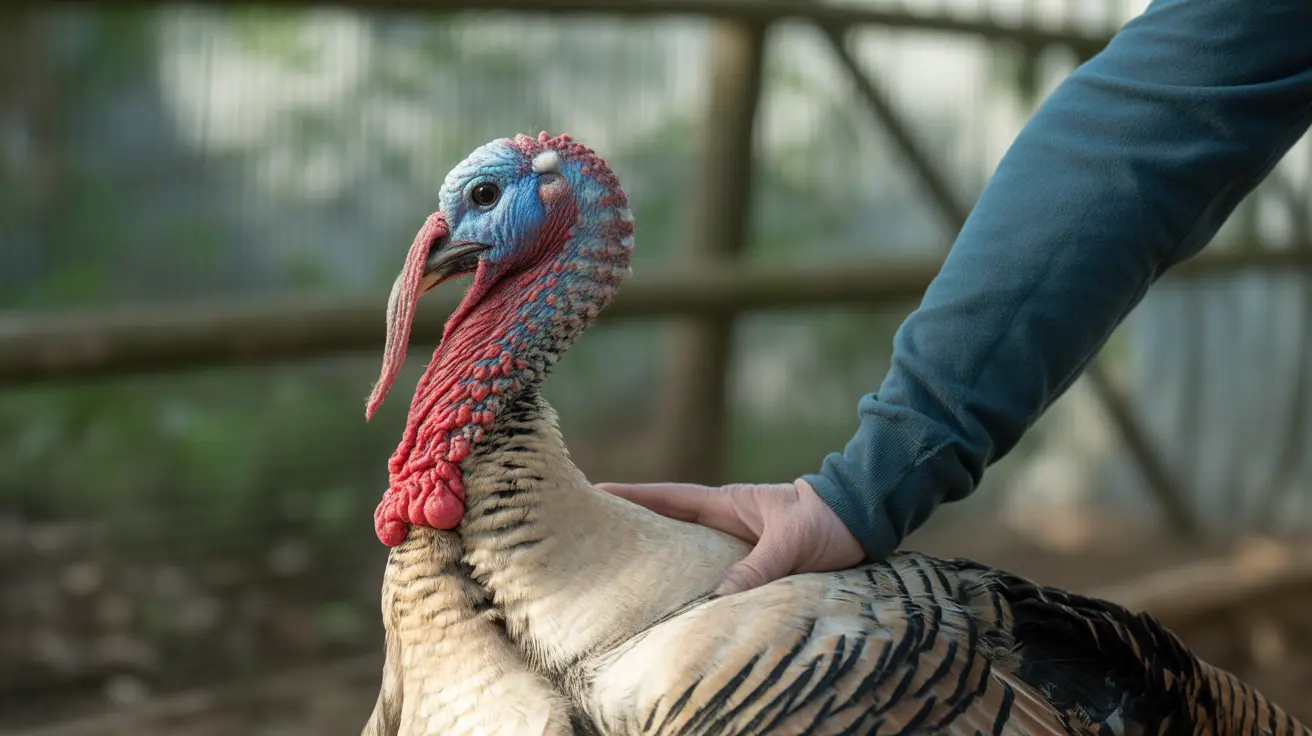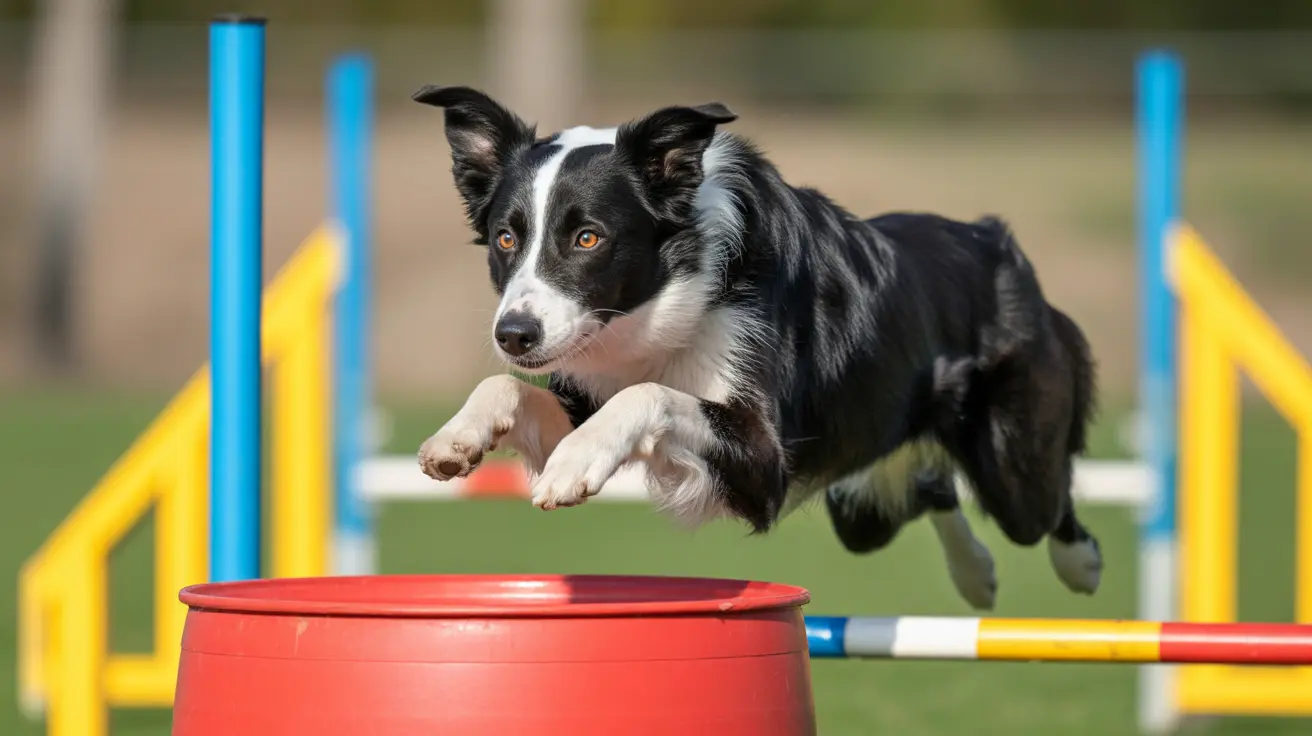The Complete Dog Sports and Activities Guide: Fun Ways to Bond and Exercise with Your Canine Companion
Dog sports and activities have transformed from simple training exercises into a thriving world of competitive and recreational pursuits that strengthen the bond between dogs and their owners. Whether you're looking to challenge your athletic Border Collie or provide gentle mental stimulation for your senior Golden Retriever, there's a dog sport perfectly suited for every canine personality and fitness level. These engaging activities offer far more than just physical exercise—they provide essential mental stimulation, enhance obedience, and create opportunities for socialization that can dramatically improve your dog's overall well-being.
The beauty of dog sports lies in their incredible diversity and accessibility. From high-energy obstacle courses to gentle scent work that taps into your dog's natural abilities, these activities cater to dogs of all breeds, ages, and temperaments. As more dog owners discover the transformative benefits of structured canine activities, the world of dog sports continues to expand, offering new ways to challenge both mind and body while building an unbreakable partnership between human and canine companions.
Popular High-Energy Dog Sports for Active Breeds
Agility Training and Competition
Agility stands as one of the most popular and accessible dog sports worldwide, featuring obstacle courses that challenge dogs to navigate jumps, tunnels, weave poles, and see-saws with speed and precision. This sport tests a dog's coordination, obedience, and teamwork abilities while guided only by their handler's voice and gestures. What makes agility particularly appealing is its adaptability—courses can be modified for dogs with specific needs, making it suitable for various breeds and fitness levels. The sport emphasizes the partnership between dog and handler, requiring clear communication and trust to successfully complete increasingly complex course designs.
Flyball: Fast-Paced Team Competition
Flyball offers an exciting team-based experience where dogs participate in relay races to retrieve tennis balls from spring-loaded boxes. This high-energy sport emphasizes speed, focus, and social interaction as teams of four dogs compete against each other. The sport is particularly beneficial for dogs who thrive on routine and enjoy the company of other canines, as it combines physical exercise with socialization opportunities. Flyball's team format also creates a supportive community environment where both novice and experienced handlers can learn from each other while their dogs develop confidence and athletic skills.
Dock Diving for Water-Loving Breeds
Dock diving, also known as dock jumping, involves dogs leaping from a dock into water to achieve maximum distance or height. This sport is ideal for water-loving breeds and provides excellent low-impact exercise that supports joint health while delivering intense physical activity. The sport offers multiple competition categories, allowing dogs to compete based on their natural jumping abilities and training level. Beyond the competitive aspect, dock diving serves as fantastic conditioning exercise that builds muscle strength and cardiovascular endurance while being gentler on joints compared to high-impact land activities.
Mental Stimulation Sports That Challenge Your Dog's Mind
Scent Work and Nose Work Training
Scent work, also known as nose work, taps into one of a dog's most powerful natural abilities by training them to find specific scents in various environments. This sport provides exceptional mental stimulation and builds confidence, making it beneficial for dogs of all ages and breeds. Unlike many physical sports, scent work can be adapted for senior dogs, shy dogs, or those with physical limitations, as it relies primarily on mental engagement rather than athletic ability. The sport helps develop problem-solving skills while satisfying a dog's natural desire to use their incredible olfactory capabilities in a structured, rewarding manner.
Treibball: Soccer for Dogs
Treibball, often described as "soccer for dogs," involves dogs herding large exercise balls into goals within a specified time limit. This innovative sport enhances problem-solving skills and obedience while providing moderate physical exercise. The sport is particularly appealing because it mimics natural herding behaviors in a controlled environment, making it suitable for herding breeds who may not have access to livestock. Treibball also emphasizes the handler-dog relationship, as success depends on clear communication and the dog's ability to respond to directional commands while working independently to move the balls strategically.
Specialized Sports Based on Natural Instincts
Herding Trials for Working Breeds
Herding trials assess a dog's ability to control livestock such as sheep or cattle, allowing working breeds to fulfill their natural instincts while demonstrating obedience and attentiveness. These trials are particularly valuable for herding breeds who may not have regular opportunities to engage their natural abilities in modern settings. The sport requires exceptional communication between handler and dog, as the dog must respond to subtle commands while making independent decisions about livestock movement. Herding trials offer both competitive and recreational opportunities, helping preserve traditional working dog skills while providing meaningful exercise and mental stimulation.
Lure Coursing for Sighthounds
Lure coursing allows sighthounds and other breeds to chase artificial lures across open fields, satisfying their natural prey drive in a safe, controlled environment. This sport is particularly important for breeds like Greyhounds, Whippets, and Afghan Hounds, who were originally bred for hunting and coursing. The sport provides intense bursts of exercise that match these breeds' natural running patterns, offering both physical conditioning and mental satisfaction. Lure coursing events often welcome mixed breeds and rescue dogs, making it an inclusive sport that celebrates canine athleticism regardless of pedigree.
Strength and Endurance Activities
Weight Pulling Competitions
Weight pulling involves dogs pulling weighted carts or sleds, showcasing their natural strength and determination while building trust between dog and handler. This sport emphasizes proper conditioning and gradual training progression to ensure safety and prevent injury. Weight pulling competitions are typically organized by weight classes, ensuring fair competition while celebrating the unique strengths of different breeds and sizes. The sport requires careful attention to equipment fit and safety protocols, making it essential for participants to work with experienced trainers who understand proper technique and conditioning methods.
Bikejoring and Canicross
Bikejoring involves dogs pulling humans on bikes, while canicross focuses on running partnerships between dogs and their owners. These sports offer excellent cardiovascular exercise for both participants while building endurance and teamwork. The activities can be adapted for various fitness levels and provide year-round training opportunities regardless of weather conditions. Both sports emphasize the importance of proper equipment, including specialized harnesses designed to distribute pulling forces safely and protect the dog's comfort during extended activity sessions.
Creative and Artistic Dog Sports
Canine Freestyle and Dog Dancing
Canine freestyle represents a choreographed dance performance set to music, emphasizing creativity and the deep bond between dog and handler through coordinated movements and tricks. This artistic sport allows for tremendous creativity while showcasing the unique personality and abilities of each dog-handler team. Freestyle routines can incorporate elements from other dog sports, obedience training, and creative tricks, making it an excellent way to showcase a dog's diverse skill set. The sport welcomes dogs of all sizes and abilities, as routines can be tailored to highlight each individual dog's strengths and natural movements.
Getting Started in Dog Sports
Choosing the Right Sport for Your Dog
Selecting the appropriate dog sport depends on several critical factors including breed characteristics, age, health status, temperament, your lifestyle, and available resources. High-energy breeds like Border Collies and Australian Shepherds often excel in agility and herding sports, while gentle giants might prefer activities like therapy work or basic obedience. Consider your dog's natural inclinations—water-loving breeds gravitate toward dock diving, while breeds with strong prey drives may enjoy lure coursing. It's essential to match the sport's physical demands with your dog's current fitness level and any health considerations identified during veterinary assessment.
Training Tips for Beginners
Training for dog sports typically involves positive reinforcement methods, gradual skill development, and consistent practice sessions. Begin with basic obedience commands before progressing to sport-specific skills, as a solid foundation ensures safety and success in more advanced activities. Many dog sports have local clubs, competitions, and training events that support newcomers and provide valuable learning opportunities. Working with certified trainers can accelerate progress while ensuring proper technique and safety protocols are followed from the beginning.
Health and Safety Considerations
Prior to engaging in high-intensity dog sports activities, a comprehensive veterinary assessment is recommended to ensure your dog's health and identify any potential limitations. Joint health becomes critical for canine athletes, and newer supplements like undenatured type II collagen (UC-II®) combined with omega-3 fatty acids may provide more effective support than traditional glucosamine and chondroitin supplements. Implementing proper warm-up routines, maintaining optimal nutrition, and following injury prevention strategies are essential for sustaining healthy participation in dog sports throughout your dog's athletic career.
Benefits Beyond Physical Exercise
Mental Health and Behavioral Improvements
Dog sports provide extensive benefits for canine mental health and behavior that extend far beyond physical exercise. Regular participation in structured activities helps reduce anxiety, destructive behaviors, and excessive energy while building confidence and social skills. The mental stimulation provided by learning new skills and solving problems can be as exhausting as physical exercise, making dog sports an excellent outlet for intelligent breeds who require mental challenges to remain content and well-behaved.
Strengthening the Human-Canine Bond
Participation in dog sports creates unique opportunities for strengthening the relationship between dogs and their owners through shared challenges, achievements, and experiences. The teamwork required in most dog sports enhances communication skills and builds mutual trust and respect. This improved partnership often translates into better behavior and responsiveness in daily life, as dogs learn to look to their owners for guidance and direction in various situations.
Frequently Asked Questions
What age should my dog start participating in dog sports?
Most dog sports can begin with basic training as early as 8-12 weeks old, focusing on foundational skills and socialization. However, high-impact activities like agility jumping should wait until growth plates close, typically around 12-18 months depending on breed size. Scent work, basic obedience, and trick training can start much earlier and provide excellent mental stimulation for puppies.
Can mixed breed dogs participate in dog sports?
Absolutely! Mixed breed dogs are welcome in most dog sports and often excel due to their diverse genetic backgrounds. Many organizations have specific divisions for mixed breeds, and some sports like dock diving and scent work focus purely on ability rather than breed standards. Mixed breeds often bring unique combinations of traits that can make them surprisingly competitive.
How much does it cost to get started in dog sports?
Initial costs vary significantly by sport, ranging from minimal expenses for scent work or basic obedience to several hundred dollars for agility equipment or specialized gear for sports like bikejoring. Many sports can be started with basic equipment, and local clubs often provide training equipment for beginners. Factor in potential costs for training classes, entry fees, and travel to events as your involvement grows.
What if my dog doesn't seem interested in the sport I chose?
Dogs, like people, have individual preferences and natural abilities. If your dog shows reluctance or stress in one sport, try different activities to find what motivates and excites them. Some dogs prefer mental challenges over physical ones, while others thrive on high-energy activities. The key is finding activities that match your dog's personality and natural instincts.
How often should dogs participate in sports activities?
Training frequency depends on the sport's intensity and your dog's fitness level. Most dogs benefit from 3-4 training sessions per week, with sessions lasting 15-30 minutes to prevent overexertion and maintain enthusiasm. High-intensity sports may require rest days between sessions, while mental activities like scent work can often be practiced daily in short sessions.
Are there dog sports suitable for senior dogs?
Many dog sports can be modified for senior dogs, with scent work, rally obedience, and trick training being particularly suitable. These activities provide mental stimulation and gentle physical exercise while accommodating age-related limitations. Swimming-based activities are often excellent for senior dogs as they provide low-impact exercise that's easier on aging joints.
How do I find local dog sports clubs and events?
Start by searching online for breed-specific clubs, kennel clubs, or sport-specific organizations in your area. Many veterinary clinics and pet stores have information about local training groups and events. Social media groups and dog sport organizations often maintain directories of local clubs and upcoming events, making it easier to connect with like-minded dog owners in your community.
Conclusion
Dog sports and activities offer an incredible opportunity to enhance your relationship with your canine companion while providing essential physical exercise and mental stimulation. From high-energy agility courses to gentle scent work that celebrates your dog's natural abilities, there's truly a sport suited for every dog regardless of breed, age, or fitness level. The key to success lies in understanding your dog's individual needs, capabilities, and interests while prioritizing safety and positive experiences throughout your journey together.
As you explore the exciting world of dog sports, remember that the greatest rewards come not from competition victories but from the strengthened bond, improved communication, and enhanced quality of life that these activities provide for both you and your dog. Start small, be patient, and celebrate every achievement along the way—your dog will thank you for the adventure, and you'll discover new depths to your partnership that extend far beyond the training field.






